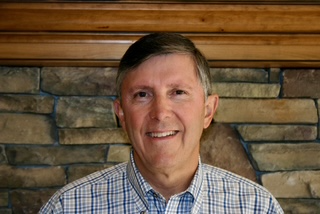’True Detective’ a symphony of gloom
Published 12:00 am Saturday, June 20, 2015
There are plenty of people who insist that auteur-driven television series like “True Detective” are the 19th-century novels of the visual age. That’s certainly arguable, though in fairness, the compliment should go both ways — Balzac, Dickens and Trollope are the showrunners of the written word.
But what’s hard to dispute is that second seasons, like second novels, can easily disappoint.
HBO’s “True Detective” returns Sunday with high expectations. The first season had weaknesses — it was slow, at times insufferably pretentious, and the resolution of the crime was silly. But overall the series was dazzling: The performances, dialogue, narrative style and cinematography reached the highest levels of the genre.
“True Detective” is an anthology series, so this story has new characters in a new setting. The only remnant of the first season is the dark imagination of its creator and writer, Nic Pizzolatto. And this time, Pizzolatto doubles down on much of what made the first season so distinctive.
That doesn’t make it twice as good, though. Not nearly.
Season 1 had two stars in the lead roles, Matthew McConaughey and Woody Harrelson. Now there are four: Vince Vaughn is Frank Semyon, a gangster-entrepreneur; Rachel McAdams is Detective Ani Bezzerides; Colin Farrell is Detective Ray Velcoro; and Taylor Kitsch is Paul Woodrugh, a motorcycle officer with the California Highway Patrol.
That’s a lot of star power and screen charisma, but all four leads wander in a haze of gloom so unrelenting and indistinguishable that it is almost comical; their lives are master classes in misery that make the novels of James Ellroy seem like Dr. Seuss stories.
The desolate landscape of industrial sprawl in the fictional city of Vinci, just outside Los Angeles, is much bleaker than the fields and swamps of rural Louisiana. Even the show’s opening theme is creepier: the sulfurous sound of Leonard Cohen reciting the words to his song “Nevermind.”
The writing is tighter. There are no dueling narrators telling the same story from different perspectives at different times. None of the characters go on extended philosophical rants about the meaninglessness of life the way McConaughey’s character did.
Then again, the ambience says as much. This is a place so infernal the entry sign should say, “abandon all hope ye who enter here.”
Cary Fukunaga directed all eight episodes of the first season, but this season employs several directors, including Justin Lin (four “Fast and Furious” movies) for the first two hours. The look this time around is moody but more straightforward.
Fans of Season 1 are still debating whether a six-minute tracking shot of a drug raid in the fourth episode was thrilling and innovative or merely showy and distracting (it was both), but so many images — a blackened, burned-down chapel against a shimmery horizon of toxic smokestacks — were as lyrical and overwrought as the language.
There isn’t as much versatility and contrast, but the new season has evocative scenes of its own. These are seedy, small-time cops and robbers, but their story is sometimes ennobled with almost startling touches of visual grandeur. In a louche bar where Frank conducts business with Ray, the camera frames Frank’s face against a rich green backdrop and holds there — the mix of light and dark is so painterly it looks like a Renaissance portrait.
The plot is equally straightforward. Frank, a casino owner who has moved up from his street thug days, is betting everything he has on a shady land deal. It’s a complicated scam, and he relies on mobbed-up investors and corrupt city officials to smooth his way. Ray, for one, is on his payroll.
When Frank’s business partner disappears, his entire enterprise is endangered. It doesn’t help when a homicide draws three law enforcement officers from different jurisdictions together to try to solve the crime.
The real mystery, though, is why all these people are so deeply troubled. As the homicide investigation proceeds, clues lead to the childhood wounds of Frank and the three detectives.
The actors are good, and their performances are particularly noteworthy because they are cast so far against type. Famous for playing glib, charming rascals, Vaughn is humorless, wary and reserved as Frank. McAdams built her career as the spunky, adorable girl next door, but Ani is an angry loner with secrets and a half-grown-out dye job. Farrell has raffish sex appeal but plays Ray as a boozy divorced dad and sad sack. Kitsch played a winning, hard-partying football player on “Friday Night Lights.” Here, he is joyless.
“True Detective” is monochromatic and self-serious, but it builds suspense with finesse and has a keen appreciation for the poetry of political corruption and urban decay.
That makes it intriguing, just not enthralling. Then again, a second novel is sometimes a prelude to a third that truly is twice as good.






